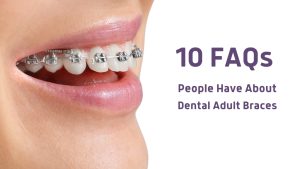A Biased View of Legacy Orthodontics
A Biased View of Legacy Orthodontics
Blog Article
9 Simple Techniques For Legacy Orthodontics
Table of ContentsLegacy Orthodontics - The FactsGetting The Legacy Orthodontics To WorkThe Main Principles Of Legacy Orthodontics Legacy Orthodontics - QuestionsNot known Incorrect Statements About Legacy Orthodontics
At Advanced Orthodontics, we offer people with a all natural treatment experience. Furthermore, we provide flexible treatment schedules, versatile repayment alternatives and a fun, delightful experience. leesburg invisalign. Telephone call ( 480) 357-4900 today for more details and timetable a consultation.An orthodontist is a dental expert educated to diagnose, prevent, and treat teeth and jaw abnormalities. They remedy existing problems and are trained to identify problems that might create in the future. Orthodontists deal with individuals of every ages, from kids to grownups. People commonly connect an excellent smile with health.
Malocclusion, or misaligned teeth, can lead to oral problems, including dental cavity, gum disease, and tough or painful chewing. Yet not everybody is birthed with straight teeth. If you have a poor bite or huge spaces in between your teeth, you might intend to consult a dental expert specializing in orthodontic care.
Legacy Orthodontics Fundamentals Explained
( Image Credit Report: DigitalVision/Getty Images) Orthodontists make use of taken care of and detachable dental gadgets, like dental braces, retainers, and bands, to transform the position of teeth in your mouth. Orthodontic therapy is for oral irregularities, including: Uneven teethBite problems, like an overbite or an underbiteCrowded teeth or teeth that are also far apartJaw misalignmentThe objective of orthodontic therapy is to enhance your bite.
A healthy and balanced bite ensures you can consume, eat, and speak properly. While you may consider orthodontists as mainly for children or teenagers who require dental braces, they can fix oral issues at any age. Orthodontists participate in college, oral institution, and orthodontic institution. After graduation, they invest 2 or 3 years in an orthodontic residency program.
All orthodontists are dental practitioners, but not all dental professionals are orthodontists. Orthodontic residency programs use extensive, focused direction for dental professionals. They concentrate on two areas: Exactly how to effectively and securely relocate teeth How to properly direct growth in the teeth, jaw, and faceOnce an orthodontist has finished training, they have the option to become board licensed.
Legacy Orthodontics Fundamentals Explained
Imbalance, or malocclusion, is the most usual factor people see an orthodontist. It is hereditary and is the result of size differences in between the upper and reduced jaw or between the jaw and teeth. Malocclusion brings about tooth overcrowding, an irregular jaw, or uneven bite patterns. Malocclusion is generally treated with: Your orthodontist affixes steel, ceramic, or plastic square bonds to your teeth.
If you have just minor malocclusion, you may be able to use clear dental braces, called aligners, as opposed to conventional dental braces (https://www.storeboard.com/legacyorthodontics1). Some people require a headgear to aid relocate teeth right into line with pressure from outside the mouth. After anchor braces or aligners, you'll need to use a retainer. A retainer is a customized gadget that keeps your teeth in position.
They can produce additional area in the mouth without having to pull teeth. Orthodontists use wires, surgical screws, or plates to sustain your jaw bone.
You may need to see an orthodontist if you have: Crowding or not adequate space for every one of your teethOverbite, when your upper teeth come by your bottom teethUnderbite, when your bottom teeth are as well much forwardSpacing or issues with gapsCrossbite, which is when your upper teeth fit behind your bottom teeth when your mouth is closedOpen bite or a vertical space in between your front base and top teethMisplaced midline, when the facility of your bottom and upper teeth don't align Fixing an oral malocclusion can: Make biting, chewing, and talking easierImprove the proportion of our face and your general appearanceEase discomfort from temporomandibular joint disordersSeparate your teeth and make them simpler to cleanse, helping protect against dental cavity or dental caries It's often a dental professional who initially notifications misaligned teeth during a routine exam.
All about Legacy Orthodontics

During your first orthodontic appointment, you'll likely have: A dental examPhotos taken of your face and smileDental X-raysPanoramic (360 level) X-rays of your face and headImpressions to develop molds of your teethThese tests will help your orthodontist know how to proceed with your treatment. leesburg orthodontics. An orthodontist is a dental practitioner that's had training to treat your teeth and jaw
Orthodontists might carry out surgical procedure, exams,X-rays,and even more to help you acquire an extra comfortable, healthier smile. An orthodontist is concentrated on your bite, so something like a damaged tooth would certainly be handled by a dental expert. Orthodontists are dental professionals but not all dental practitioners are orthodontists. Orthodontists are concentrated on your bite, or the way your teeth fit together, and the straightness of your teeth.
Ever before wondered just how celebrities constantly seem to have perfectly straightened teeth? Orthodontists are dental specialists who focus on fixing abnormalities in the teeth and jaws.
Some Known Factual Statements About Legacy Orthodontics

While dental braces are one of the most commonly recognized orthodontic treatment, orthodontists have a varied toolkit at their disposal. The certain strategy chosen depends on the extent of the case, the person's age, and private choices. These tried-and-true dental braces utilize a system of braces adhered to the teeth and connected by cords.
These removable trays are personalized to gradually shift the teeth's setting. In situations of narrow jaws, palatal expanders can be utilized to develop room for correct tooth placement.
Report this page